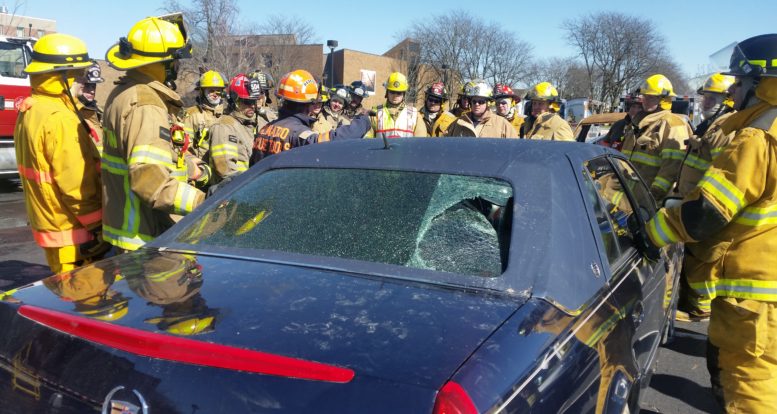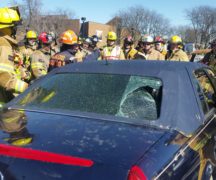By JAN LARSON McLAUGHLIN
BG Independent News
Volunteer firefighting was once a tradition – even a rite of passage – in small Ohio communities. But many volunteer fire departments across the state are finding their rosters shrinking to dangerously low numbers.
“People are not volunteering to be firefighters anymore,” said Kevin Reardon, fire marshal for the state of Ohio. Some small departments depend greatly on graying members. “The problem is we don’t have other people coming up behind them.”
Ohio has 1,180 fire departments with approximately 70% of them staffed by volunteers, who typically have other full-time jobs.
“It’s a huge challenge,” Reardon said.
Decades ago, being on a volunteer fire department was like being a member of a community social group. Now, it’s more like a second job – but without the pay.
Calls come during the night, during meals, during kids’ baseball games, during holiday gatherings – for neighbors across town or strangers on the highway.
Wood County still has 23 fire departments, with all but a handful being volunteer. A few neighboring departments have merged to become fire districts, but only one – Jerry City – has shut down.
Because of a statewide concern about the declining numbers of volunteer firefighters, the State Fire Marshal’s Office is going on the road to listen to volunteers and find solutions. The Ohio Task Force on Volunteer Fire Service wants to hear from firefighters in this region on Wednesday, Aug. 17, from 3:30 – 5:30 p.m., at Penta Career Center in Perrysburg.
The task force will take the comments made at the meetings and form recommendations to improve the sustainability of the volunteer fire service in Ohio.
“We feel very positive we’ll have some good recommendations for the governor,” Reardon said.
Some of the suggestions being considered include:
- Offering benefits such as pensions and tax credits to volunteer firefighters.
- Lessening the training requirements.
- Merging struggling fire departments into fire districts.
Training can be a hurdle for attracting and retaining firefighters, Reardon said. The basic initial firefighter training is 36 hours. That used to be good enough to keep someone on a department for a lifetime. But now an additional 54 hours of training are required over additional three-year periods.
“It can be a significant amount of time,” Reardon said.
In some cases, the fire departments can’t afford to foot the bill, he said.
“Some volunteers have to pay for training themselves.”
In addition to firefighting skills, the volunteers learn how to handle hazardous materials, search and rescue skills, emergency medical skills, and how to drive fire trucks. They train for handling agricultural accidents, tanker shuttles to put out fires where there are no fire hydrants, fire investigations, drug overdoses, meth labs, natural gas safety, silo explosions and severe weather.
“The volunteer firefighting services are so professionalized now,” Reardon said.
Volunteer departments also suffer because of the shift from people working in small towns to commuting to more urban areas for their jobs. That leaves fewer volunteers available in small communities during the day to respond. And unlike the past, many employers no longer allow workers to leave jobs for fire or EMS runs.
Also, there are fewer people engaged in farming on the edge of communities, and fewer of them are signing up for volunteer fire departments.
On top of the training and time demands, the equipment costs are also heavy for volunteer departments. It used to be that the gear worn by firefighters was stretched out well beyond its usefulness. Now that gear has to be retired at a certain point, rather than continue to be handed down.
The costs for trucks have skyrocketed, with a bare-bones pumper costing about $700,000, Reardon said Several volunteer fire departments also struggle to provide adequate stations.
“Some buildings are barely suitable to house equipment, let alone people,” Reardon said.
While grants are available for some equipment such as radios, tools and trucks, it’s never enough.
“That really just scratches the surface,” Reardon said. “And public safety is not exempt from a poor economy.”
And all this is happening at a time when voters in some areas are becoming less likely to support taxes for fire services, he said.
“Some communities are voting down fire levies,” Reardon said. That trend is not being seen in Wood County, where voters continue to consistently pass fire tax issues.
Visit the State Fire Marshal’s website at com.ohio.gov/fire for a full schedule of the statewide listening tour and to learn more about the volunteer taskforce and its mission.



